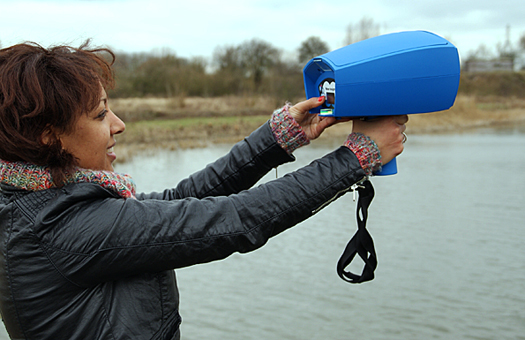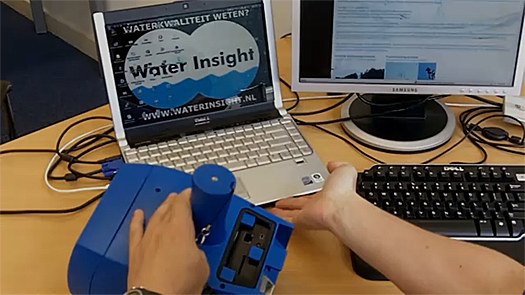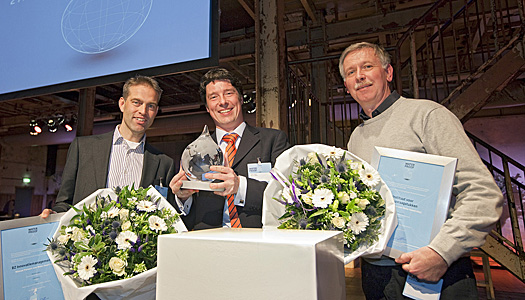Estonia Tartu Observatory buys awarded WISP-3 portable spectrometer for monitoring surface water quality
The Estonian Tartu Observsatory is one of the first international clients of Water Insight to buy the WISP-3 portable spectrometer for monitoring surface water quality.
The WISP-3 has three build-in spectrometers that can measure substance that colors the water, such as algae, silt and dissolved organic substances. By means of simple algorithms the device calculates the concentrations.
Many small Estonian lakes
"Satellite images are of no use to us", explains director Anu Reinart of the Tartu Observatory, "as many of our lakes are very small. Some are less than one pixel. To be able to meet European monitoring regulations for these small waters, the WISP is very handy".
The Tartu Observatory tested the WISP earlier this year on Lake VÃrtsjÃrv and Lake Peipsi. Reinart praises the device for being lightweight and cheap.
This pilot project was awarded the Partners for Water Award 2012 on November 28th.
Born out of frustration
"The WISP-3 was actually born out of frustration", says director Marnix Laanen of Water Insight. In 2005 he and Steef Peters established the company as a spin-off of the VU University in Amsterdam. Laanen and Peters had worked on spectral information related to water surfaces in the form of satellite data.
"We used a spectrometer for the validation of the satellite data, but had to work with an impractical measuring method and complex calculation models," Laanen remembers. "We were convinced that there had to be a much easier way."
Reflection spectrum with highs and lows
The WISP-3 consists of three spectrometers. One measures the amount of light that is reflected by the water at an angle of 42 degrees. The second measures the amount of light entering the water at the same angle, and the third sensor measures the total incidence of light.
A reflection spectrum that consists of highs and lows is then determined by means of models, and the resulting information shows the amount of a specific substance, chlorophyll, for instance, in the water.
The WISP-3 measures the following parameters:
* amount of Chlorophyll-a in the water as proxy for algal biomass
* amount of Phycocyanin in the water as proxy for the concentration of cyanobacteria
* amount of suspended sediments (TSM)
* amount of Coloured Dissolved Organic Matter (CDOM)
* water transparency, not only over PAR but also for separate spectral bands
* Secchi Disk depth
* occurrence of floating layers of cyanobacteria
Monitoring services
The measurements are stored on a SD card and can be uploaded to a computer to be analyzed. "We are now developing a website for the data to be handle on line. The website enables us to provide our clients with all kind of additional services, such as checking the monitoring results", adds Laanen.
The Estonian WISP-pilot project won the Partners for Water Award 2012 on November 28th. The jury praised the innovative nature of the project, as well as the simplicity and effectiveness to measure surface water quality. Director Marnix Laanen (middle) of Water Insight received the award.
The Partners for Water Award is presented every two years by the programme Partners for Water of the national Dutch government supporting international projects of the Dutch water sector.
More information
Water Insight
Wageningen, the Netherlands
+31 317 210 004
www.waterinsight.nl
Tartu Observatory
Tartumaa, Estonia
+372 7410 265
www.aai.ee
Partners for Water
The Hague, the Netherlands
+31 88 602 80 60
www.partnersvoorwater.nl






